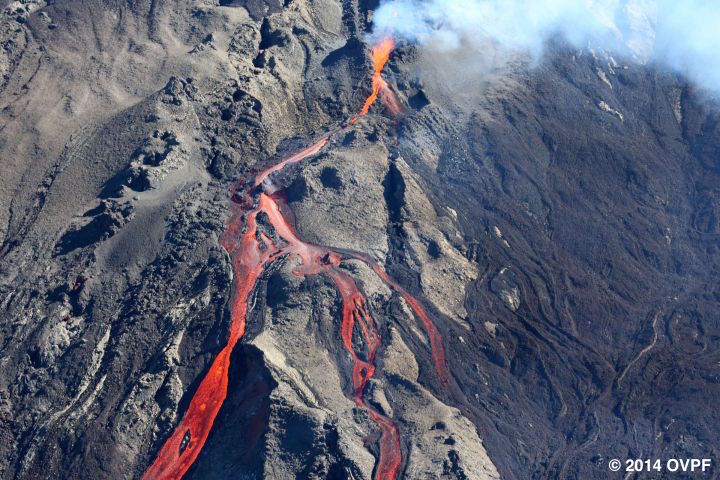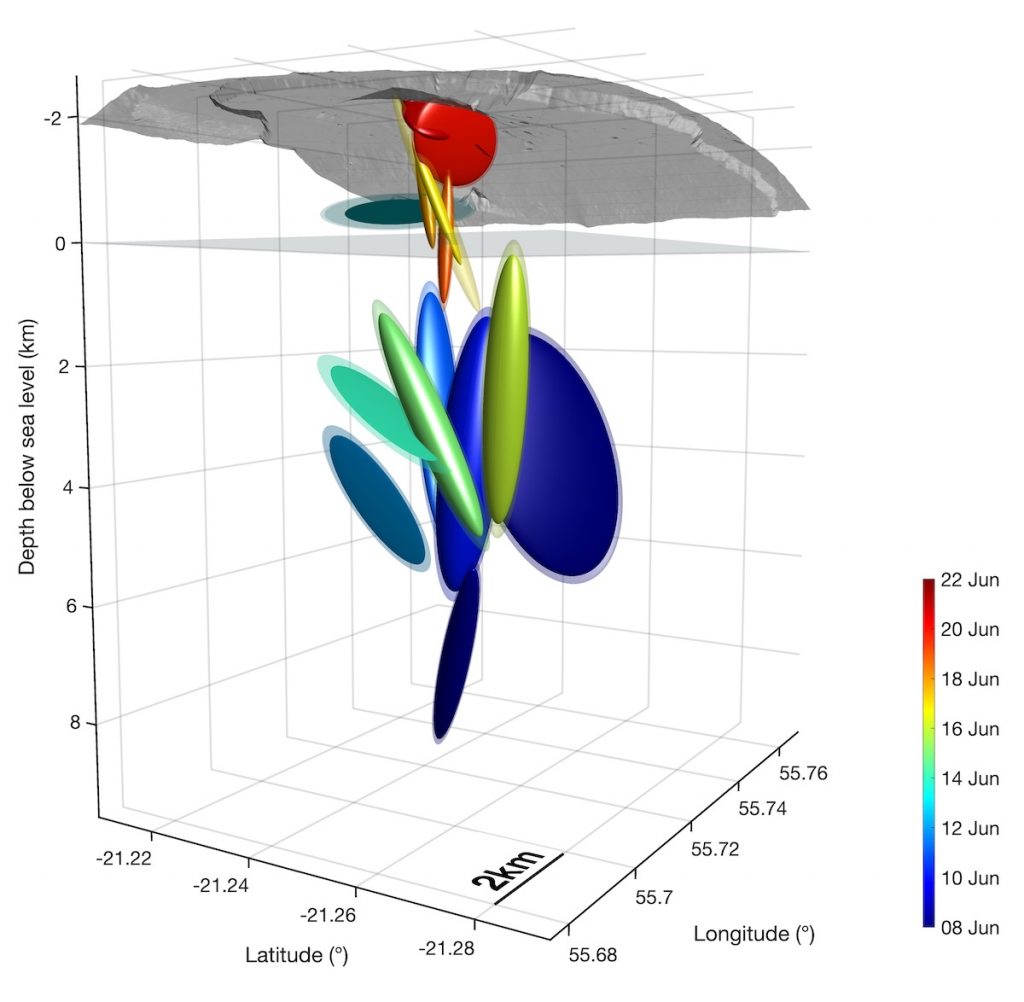Real-time imaging of a volcano’s internal plumbing to better anticipate eruptions
Researchers at IPGP and their international colleagues have developed a new operational method for monitoring volcanoes: using GPS measurements to track, in real time, the internal structures stressed by magma overpressure as it migrates towards the surface. This technique, known as "mechanical tomography", has been implemented at Piton de la Fournaise on Reunion Island.

Publication date: 15/10/2020
Observatories, Press, Research
Related observatories : Volcanological Observatory of Piton de la Fournaise (OVPF-IPGP)
Related themes : Natural Hazards









